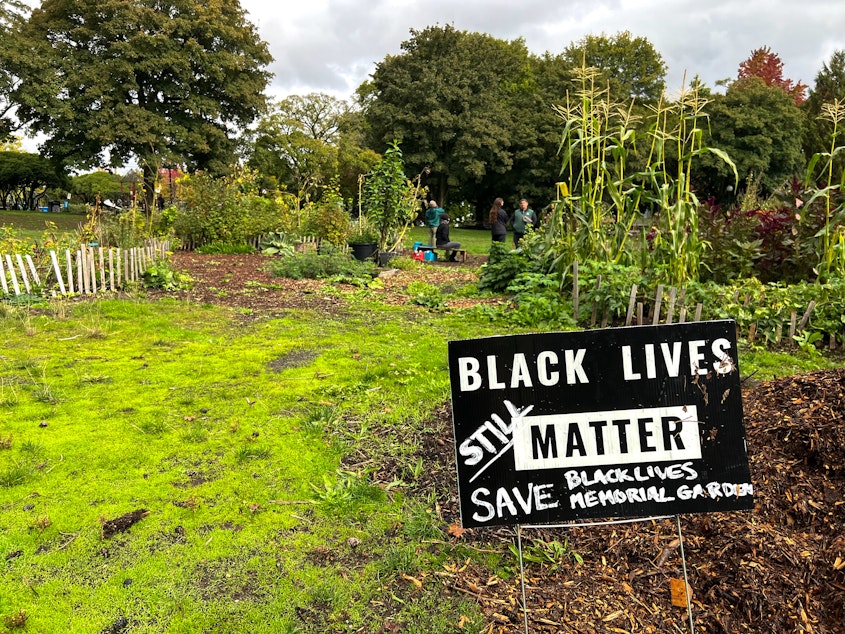Cal Anderson BLM garden to be removed by city despite pushback

A community garden planted during Seattle’s 2020 racial justice protests could be gone by the end of this week.
Seattle Parks and Recreation says it needs the space at Capitol Hill’s Cal Anderson Park for other uses, and plans to reseed the area to restore its turf. Last week, the department gave gardeners two weeks’ notice to vacate.
Marcus Henderson is an organizer with the group Black Star Farmers, which maintains the Black Lives Memorial Garden created in the “Sun Bowl” area of Cal Anderson Park three years ago. He was one of the first gardeners to break up the soil to let plants take root that summer.
Henderson said it’s not the first time Parks and Recreation has launched an effort to move the garden. In public surveys, the department has offered to relocate the garden to nearby pieces of land, including in the park — an offer that’s still on the table. But Henderson said the department has never included an option to keep the garden where it currently is.
“We've noticed that Parks and Recreation has started this conversation from a one-sided perspective of ‘You will move the garden’ instead of starting...a conversation around the space [to] talk about why this space is important,” he said.
Sponsored
Seattle Parks and Recreation sees the importance of that area of the park differently.
“The ‘Sun Bowl’ remains one of few spaces that is appropriate to host gatherings and large events at Cal Anderson Park because of its intentional design as a natural amphitheater and proximity to electrical and water hook-ups,” the department said in a statement provided to reporters.
Stephanie Webb is also an organizer of the Black Lives Memorial Garden and said it was once much bigger, with a greenhouse and other sections. But little by little, pieces have been taken away, either through sweeps, people destroying parts of the farm, or things being carried away, she added.
But it hasn’t been all destruction, Webb said. Many people pass through the garden, enjoying and taking in the plants.





